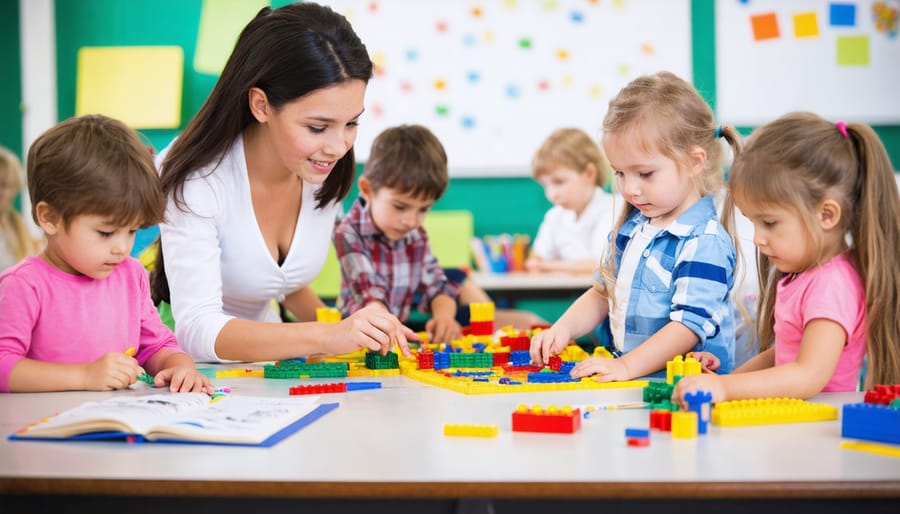Every child is unique, but some minds are wired a little differently. Supporting neurodiverse children—those with ADHD, autism spectrum disorder (ASD), and diverse learning styles—means recognizing these differences not as obstacles, but as strengths. In today’s world, understanding and embracing neurodiversity is more important than ever, especially for families and educators in Tier-1 countries where inclusive education sets global standards.
Neurodiversity describes the natural variations in the human brain and cognition. Instead of forcing children into a one-size-fits-all approach, embracing neurodiversity ensures that every child feels valued, understood, and empowered to thrive in their own way.
Understanding Neurodiversity
What is Neurodiversity?
Neurodiversity is the concept that neurological variations—such as autism and ADHD—are natural and valuable forms of human diversity. Just as our cultures, languages, and personalities differ, so do the ways our brains process information and interact with the world.
Why It Matters
Building awareness around neurodiversity helps break the stigma often linked to learning differences. It encourages empathy, acceptance, and practical changes in education and society, ensuring every child has the chance to shine.
ADHD: More Than Just Hyperactivity
Recognizing ADHD
Attention Deficit Hyperactivity Disorder (ADHD) affects millions of children worldwide. It’s characterized by symptoms like difficulty focusing, impulsive actions, and hyperactivity. But ADHD is much more than restlessness; it involves differences in how the brain regulates attention and activity.
Supporting Children with ADHD
- Structured Routines: Consistent schedules help children with ADHD manage their time and tasks.
- Clear Instructions: Breaking down instructions and offering reminders boosts comprehension and follow-through.
- Movement Breaks: Allowing for regular movement can help release energy and restore focus.
- Positive Reinforcement: Encouragement and celebrating small wins motivate children to stay on track.
Playing to Strengths
Children with ADHD are often creative, energetic, and resilient. Recognizing these traits allows parents and educators to channel their strengths into positive outlets, from sports to the arts.
Autism Spectrum Disorder: Diverse Ways of Seeing the World
Understanding Autism
Autism is a spectrum, meaning each child’s experience is different. Some may struggle with social communication and sensory processing, while others excel in areas that require focus, detail, or imagination.
Fostering Inclusion
- Sensory-Friendly Spaces: Minimizing loud noises and harsh lights helps autistic children feel comfortable.
- Visual Supports: Picture schedules and visual cues ease transitions and enhance understanding.
- Predictability: Clear routines and warnings before changes reduce anxiety.
- Respect for Communication Styles: Whether a child speaks, uses devices, or communicates in unique ways, respecting their voice is vital.
Celebrating Differences
Autistic children often possess intense passions and specialized interests. Nurturing these interests can develop expertise and boost confidence—not only helping them learn, but also connecting them with like-minded peers.
Embracing All Learning Styles
Not Every Mind Learns the Same Way
Some children are visual learners who thrive with images, charts, and videos. Others learn best by listening, or by doing things hands-on. Understanding and catering to these styles can unlock a child’s full learning potential.
Adapting Teaching Approaches
- Multi-Sensory Lessons: Combine visuals, sounds, and movement to engage all learners.
- Flexible Assessments: Offer multiple ways to demonstrate knowledge—tests, projects, performances, or discussions.
- Personalized Feedback: Specific, constructive feedback supports growth for every learning style.
Building Confidence and Autonomy
Encouraging self-awareness helps children identify their own learning preferences. When children understand how they learn best, they become more independent and motivated learners.
Creating Supportive Environments
At Home
- Open Communication: Foster trust by listening to your child’s thoughts and feelings without judgment.
- Predictable Routines: Secure, predictable routines create safety and structure.
- Celebrate Strengths: Notice and celebrate your child’s achievements, no matter how small.
At School
- Inclusive Classrooms: Diverse seating, sensory corners, and extra time on tasks support neurodiverse learners.
- Professional Development for Teachers: Ongoing training equips educators with effective strategies for inclusion.
- Peer Education: Teaching all students about neurodiversity promotes empathy and reduces bullying.
Overcoming Challenges Together
Addressing Common Myths
It’s a myth that neurodiverse children can’t succeed in mainstream settings. With the right supports, they can and do thrive—often bringing unique insights and innovations to classrooms and communities.
Working Collaboratively
Open communication between parents, teachers, therapists, and the children themselves is key. When everyone shares knowledge and works toward common goals, neurodiverse children receive the consistent support they need.
Technology and Tools for Neurodiverse Learners
Assistive Technology
- Speech-to-Text Apps: For children with dyslexia or difficulty writing.
- Visual Schedules: Apps and devices that help structure the day.
- Noise-Cancelling Headphones: Reduce sensory overload in noisy environments.
Benefits of Technology
The right technology can make learning more accessible and tailored to individual strengths, leveling the playing field in classrooms.
The Role of the Community
Promoting Awareness
Community events, workshops, and campaigns foster greater understanding and acceptance of neurodiverse children.
Ensuring Access
From playgrounds to afterschool programs, accessible opportunities help ensure every child participates and belongs.
Celebrating Diversity
Organizing events that highlight the talents and achievements of neurodiverse individuals encourages pride and dismantles stereotypes.
Conclusion: Every Mind Matters
Supporting neurodiverse children is about more than meeting challenges—it’s about celebrating unique perspectives, hidden strengths, and diverse talents. Whether your child has ADHD, autism, or a unique way of learning, they deserve environments that acknowledge their individuality and help them flourish.
By embracing neurodiversity, we not only help children succeed but also enrich our communities, workplaces, and world. Remember: every child deserves not just acceptance, but encouragement to become their best self.
Call to Action
Let’s work together to create truly inclusive spaces for all children. Start today by learning more about neurodiversity, advocating for inclusive education, and encouraging the neurodiverse children in your life to chase their dreams. Every mind is unique—let’s celebrate them all!






